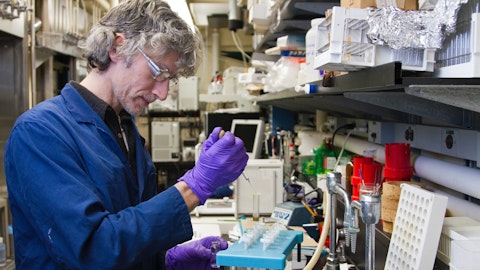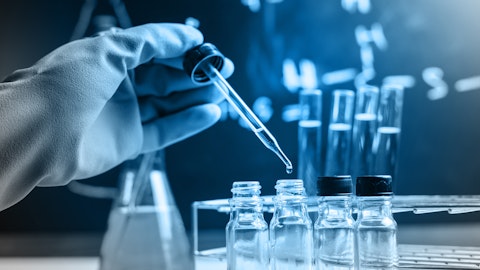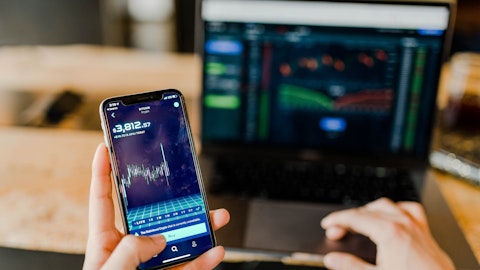I mean, we are the leader in MEAs. We are — we will be the leader — and we’re going to be the intel inside when it comes to how you measure and use — how you use organoids. So that and bioproduction, when we — very few companies do we see as competitors, that gives us a great position, scarcity value, pricing value. And now that we’re done fixing things, I feel like we’re putting our foot on the gas pedal, you’re going to see now commercialization of these products.
Paul Knight: Okay. Thanks, Jim.
Jim Green: Thanks, Paul.
Operator: Thank you. [Operator Instructions] And our next question coming from the line of Frank DiLorenzo with Singular Research. Your line is open.
Frank DiLorenzo: Good morning. A question about the…
Jim Green: Hey, Frank.
Frank DiLorenzo: Hey, how are you? A question about the 2023 sales. Can you give us an idea of what the dollar amount in 2023 for overall revenue was related to discontinued and divested products? And following along the idea of the long-term growth objective, is that something we could begin to assume getting close to that 10% beginning in 2025 from say 2024 base being that this year looks relatively flat, mostly due to China?
Jim Green: Yeah, good question. I mean, I think the number of discontinued this last year on a net basis was a little over $5 million. So $5 million on $113 million or something like that, that gives you kind of a base underlying of the core growth, and that’s prior to what we see as far as with the new introductions and the new growth areas. So, if I’m building on a base like that, then that kind of underpins what I would suggest to that kind of a base business of [5% to 7%] (ph) going forward as you look into out years. And then, with these new areas augmenting that by arguably — and we’ll see how it goes. I mean, maybe we add with the other new areas, we add 2 points or 3 points, maybe we add 5 points or 6 points. So that will be the swing on it as to how well adoption happens with the new areas.
Frank DiLorenzo: Okay. Regarding — you’ve been talking about a lot of new products et cetera and the launches, is that back-ended or front-ended as far as some of the new products getting out there and being purchased by clients? And also, can you maybe give a little more granularity on your strategy, expect in China? But aside from China, but what your strategy might be outside of the United States to garner maybe some incremental growth expansion into some countries you’re currently in or to other regions?
Jim Green: Well, I guess, first, the question on — I want to make sure, could you repeat your first question, because I think that was — you say…
Frank DiLorenzo: Just you’ve been talking a lot about the new product launches, things of that nature. Can you give us an idea of what the ramp might look like? Is that going to be more of a second-half or first-half event, et cetera?
Jim Green: Yeah. I mean, these — the newer products, as you can tell, are they’re higher content, they’re higher value, they’re higher numbers, and they are little — and they’re more — they’re a little bit longer, more of a consultative sale. So, the introduction started in SFN in November. We’re reinvigorating it again with society with applications to toxicology. So, we see — we’re at the point now we’re in full commercialization. So, the time from order to shipment can vary, but typically, you’ll spend products, I would say, on average, you might spend a few months getting to — secure the order and then you’d look at another few months for the first sale of that order. So, it certainly is a little more back-end loaded.
That’s why we’re seeing the conversion to shipments and revenue really starting to happen in the second half of this year and then extending from there and expanding from there. And then, the other question about outside the U.S., we tend to focus really on what works and is needed in the U.S. is a good proxy for what’s needed outside the U.S. So, we tend to, again, design mostly for the U.S. to start with the assumption that China is going to want the same thing. There’s a heavy investment there and expect that’s going to be recurring or — returning again now to really bring up their ability to do the kind of drug development and discovery and research and then production that’s going to be happening — that’s going to continue to happen there.



